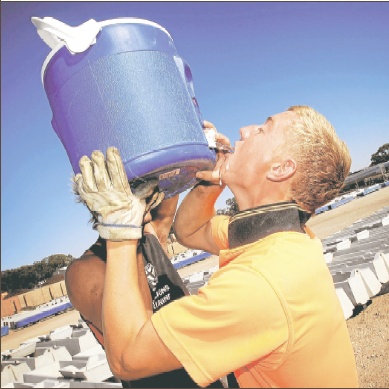Deep heat planning needed
 The warming planet requires urgent planning for heat and human health, experts say.
The warming planet requires urgent planning for heat and human health, experts say.
Heat-related morbidity and mortality will increase without investment in risk-management strategies, according to a new series in medical journal The Lancet.
“As a result of human activity, it is inevitable that much of the planet’s population will in the future be at greater risk of exposure to extreme heat than they are today,” says Professor Ollie Jay, Professor of Heat and Health at the University of Sydney.
“Amid stark projections about the increasing effects of climate change, urgent investment in research and measures to combat the risks of extreme heat is critical if society is to not only survive, but thrive, in a hotter future world.”
The experts say prevention and planning must go together.
“Two strategic approaches are needed,” says Professor Kristie Ebi from the University of Washington.
“One is climate change mitigation to reduce carbon emissions to alter the further warming of the planet.
“The other is identifying timely and effective prevention and response measures, particularly for low-resource settings.
“With more than half of the global population projected to be exposed to weeks of dangerous heat every year by the end of this century, we need to find ways to cool people effectively and sustainably.
“Failure to reduce greenhouse gas emissions and to develop and deploy heat action plans will mean a very different future awaits many people and communities around the world.
“Day-to-day summer activities– such as exercising and working outdoors – may change dramatically as increasing warming means people are at greater risk of exposure to intolerable heat far more often, particularly in tropical regions.”
When exposed to extreme heat stress, the body’s ability to regulate its internal temperature can be overwhelmed, leading to heat stroke.
In addition, physiological thermoregulatory responses that are engaged to protect body temperature induce other types of physiological strain and can lead to catastrophic cardiorespiratory events.
Effects from extreme heat are also associated with increased hospitalisations and emergency room visits, increased deaths from cardiorespiratory and other diseases, mental health issues, adverse pregnancy and birth outcomes, and increased healthcare costs.
Older people and other vulnerable people due to a limited behavioural adaptive capacity (e.g., isolated at home, poor mobility) are also more likely to experience the health effects of extreme heat.
Extreme heat also lessens worker productivity, especially among the more than 1 billion workers who are exposed to high heat on a regular basis.
These workers often report reduced work output due to heat stress, many of whom are manual laborers who are unable to take rest breaks or other measures to lessen the effects of heat exposure.
“Extremely hot days or heat waves that were experienced approximately every 20 years will now be seen more frequently and could even occur every year by the end of this century if current greenhouse gas emissions continue unabated. These rising temperatures combined with a larger and older population, mean that even more people will be at risk for heat-related health effects,” said Professor Ebi.
The authors say there are many actions individuals can take to cool themselves down and blunt other types of physiological strain.
Effective and sustainable strategies include;
-
electric and misting fans
-
self-dousing with a water spray or sponge
-
wearing wet clothing
-
immersing feet in cold water
-
short breaks from physical activity
-
remaining well hydrated (the temperature of water consumed has little consequence)
-
modifying clothing or protective equipment to improve ventilation
On a broader scale, adaptations to buildings can help cool indoor environments.
These include external coatings to reflect heat away from buildings and green walls to reduce surface temperatures, improved insulation and glazing, and better ventilation through and around buildings.
Features of the urban environment and surrounding landscape also influence conditions in built-up areas.
Lakes, large grasslands and parks, and shaded outdoor areas, as well as reducing pollution within cities, are important too.
To protect populations, the experts say that heat action plans, which include early warning and response systems and robust surveillance and monitoring, must include evidence-based cooling strategies.







 Print
Print